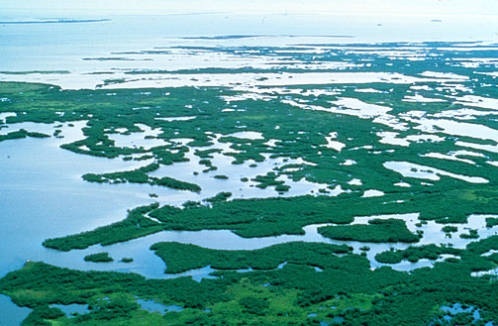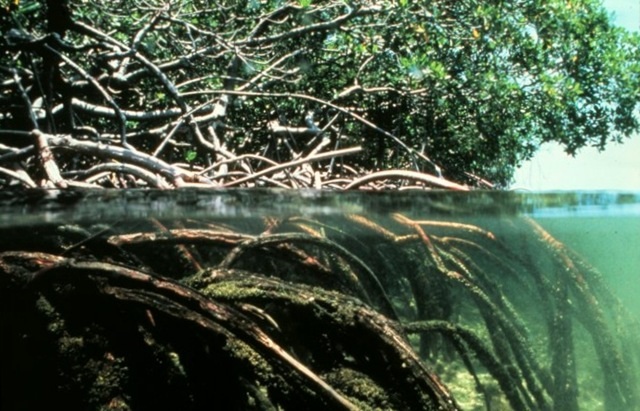Dave and Amy Freeman of the Wilderness Classroom Explain the Importance of Mangroves as They Record Signs of Wildlife
We experienced an abrupt change this week when we left the Suwannee River and paddled out into the Gulf of Mexico. When we saw a dolphin I said,”wow, we have not seen a dolphin in a long time.” Then I remembered that the reason we had not seen dolphins – we had been traveling on rivers for the past few weeks. Now we see dolphins every day. Plus, we are seeing lots of other plants and animals like stingrays, sea turtles, ospreys and pelicans, which are all common along the Gulf Coast. We have also entered a new habitat, the mangrove swamp.
Mangrove swamps are coastal wetlands found in tropical and subtropical regions. Mangrove swamps are made of halophytic (salt loving) trees, shrubs and other plants growing in shallow brackish and salt waters. Mangroves are often found in estuaries, where fresh water meets salt water and are infamous for their impenetrable maze of woody vegetation. We camped in a mangrove swamp a few nights ago and it was really hard to climb through the tangle of roots and limbs in search of a flat, dry place set up our tent.
Mangroves also provide shelter for humans! Mangroves protect shorelines from damaging storm and hurricane winds, waves, and floods. Mangroves also help prevent erosion by stabilizing sediments with their tangled root systems. They also help maintain water quality by filtering pollutants and trapping sediments originating from land. Mangroves are a buffer between the ocean and the land. They help the ecosystems around them stay healthy.
Experts have found that as much as 50% of the world’s mangroves have been destroyed by development over the last 100 years. During the last 100 years a lot of the mangroves in Florida have been destroyed as well. However, people now understand the importance of protecting mangrove habitat. In Florida, the Mangrove Trimming and Preservation Act makes it illegal to use poisonous chemicals in mangroves. People need a permit from the government before they can disturb mangroves in any way.
When we paddled through a maze of mangroves yesterday we saw fish feeding on the surface, dolphins surfacing and many birds roosting in the tangled branches. It was easy to see that mangroves are an important habitat. We are happy that scientists understand how important mangroves are and people are working hard to protect them.
–Dave and Amy Freeman https://www.wildernessclassroom.com/blog/updates/notes-from-the-trail/699-exploring-mangrove-swamps.html


